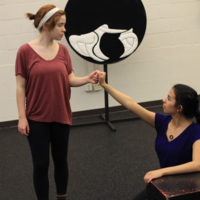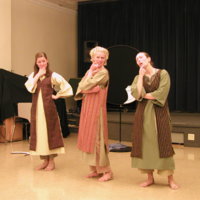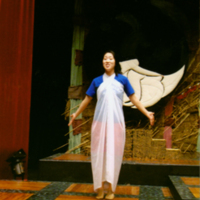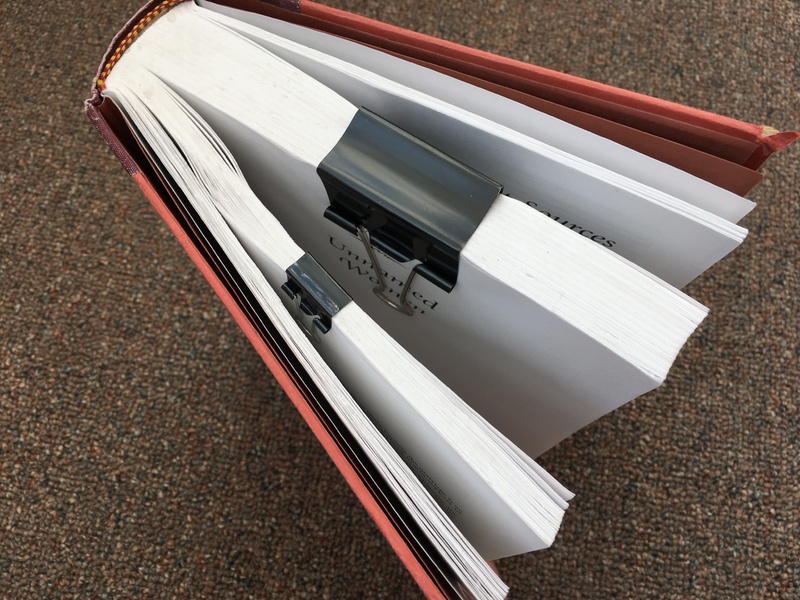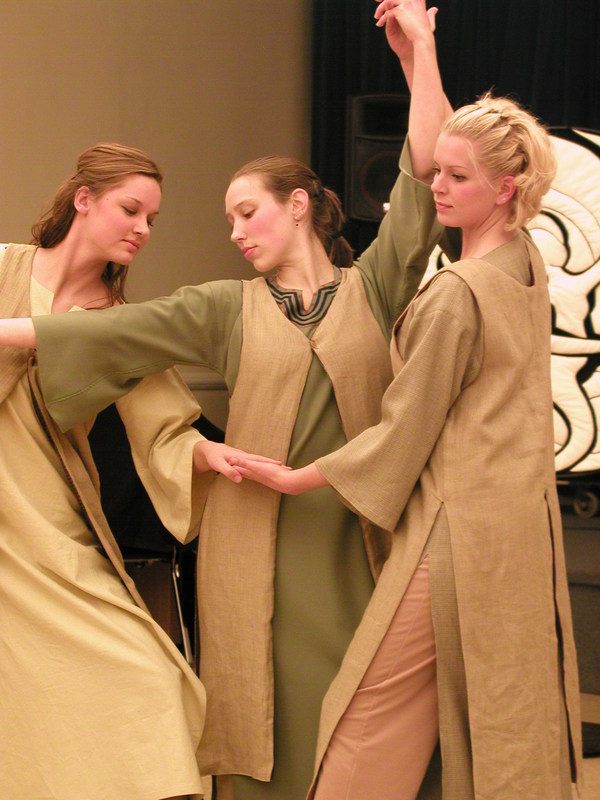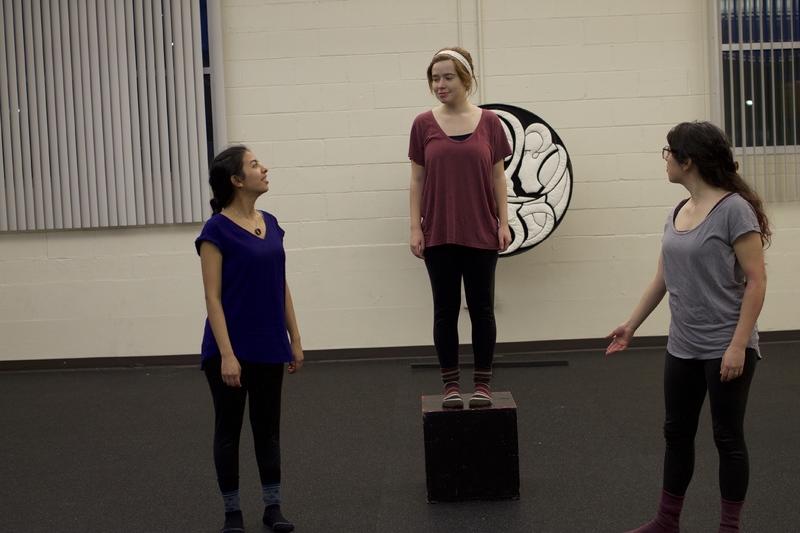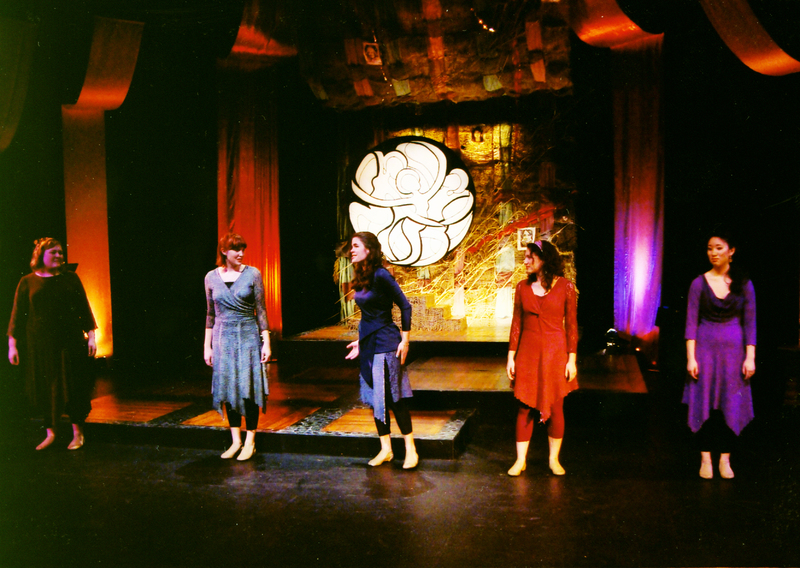Constructing A Script
One of the first goals in creating a show is writing a script. I found my way to Dr. Linda Schearing, a professor of Hebrew Scriptures and contributing writer to Women in Scripture: A Dictionary of Named and Unnamed Women in the Hebrew Bible for a potential collaboration. I remember our first meetings in her basement office; Linda was concerned because she had never written a play and was more comfortable writing sermons. She need not have been concerned. The first set of writings she shared with me helped confirm that I had found the right partner for the artistic team. Her words were written like poetry; full of imagery and allowing for lots of creative development.
She shared with me stories of named women like Tamar, who had no hope of securing a future but took the situation into her own hands the best she knew how. She also shared the Daughters of Zelophehad, who fought the unjust legal system preventing them from inheriting anything when their father died. As she would share various stories, I would respond by sharing my vision and insights as a director and theatre artist.
It was a sheer delight spending that time with her; her knowledge was vast, and she was an excellent story teller--painting such a vivid picture not only of the story, but of the context within which these women lived. I remember in particular her speaking of the ‘unnamed’ and showing me the Dictionary of Named and Unnamed Women in the Hebrew Bible.
I was duly shocked by the tiny portion of the book that represented the named women and the majority of the dictionary that represented the unnamed. Without names, they were only listed as…
Sisters, Mothers, Grandmothers…
WSV Prologue
We were both interested in bringing forth some of the stories of unnamed women who had lived, loved, worked, and died, yet were simply listed as mothers, daughters, and wives. We decided to find a way to honor those named and unnamed.
We realized we needed to help the audience with the context of the production and our exploration. The best way to do this was in the prologue…
Some Voices were silencedTheir stories forgottenSometimes even their names were no longer rememberedBut these are our storiesOur legacy from the pastWSV Prologue
It was important for this script to not be a strictly historical or period setting of these stories. I wanted the artists and audiences to feel connected to these women in a contemporary way. I loved listening to Dr. Schearing tell the stories and I took many notes, but some key themes and questions began to form:
- What is it to feel your own strength?
- What is it to love?
- What is it to have faith?
- What is it to hunger spiritually?
- What is it to be a mother?
I was excited by the way these women were strong, confident, and used their intelligence and creativity to fight back. Linda and I could always find parallels to the contemporary, yet just when it seemed like this play might write itself we hit a wall.
These amazing stories felt like a string of pearls that didn’t have any kind of dramatic arc. Each story had an antagonist of sorts and a dramatic flow in and of itself, but I did not see how that would work as a body of theatre. Where was the over-arching conflict? How did all these stories connect with each other rather than just being a series of vignettes? They were weak as a collection because there wasn’t a rise and fall to the action. All theatre needs conflict, so how could we bring the audience on an overarching journey?
Then Linda told me of the Levite’s Concubine; one of the most disturbing stories of all. A Levite gives his concubine to an enraged mob who rapes her and leaves her on the doorstep. The levite then proceeds to cut her into 12 pieces to warn the tribes “as a grisly petition for vengeance”.
His violence – His vengeanceMy body – My blood – My storyCan torn cloth ever be made whole?Can the threads of lives pulled asunderEver be woven back together?WSV Conflict
I was overwhelmed by the horror of the story, but there was something about it that seemed to galvanize the production. We wondered, “What if this unnamed concubine could frame the entire production? Would this thereby give more power to the other stories?”
The typical flow of a story or play is that the climax comes at the middle or end. But as we tried various locations for this story, it did not feel right. Then we wondered, “What if this gruesome climax occurred at the beginning?” We tried starting the script with the Levite’s Concubine and found that by then telling the other stories in time, they truly developed as stories of hope and strength.
Their voices tell ancient storiesStories of power – Stories of hope…WSV Prologue
After hitting rock bottom at the beginning of the script with the Levite’s Concubine, the stories that would come after could symbolically represent a healing of this unnamed woman, and allow the audience to climb up with her.
As we were writing, it was sobering to realize that many plights of these women rang true to issues of this day. We are still fighting against unjust laws, discrimination, and our own self-doubt. It is clear that these stories needed to be told to give new perspectives on these ancient themes. We need to hear these stories so that they can continue to teach us….
That anger gives us strength to combat injustice
That risk taking is worth paying the price it demands
That justice is the right of every woman, everywhere
That courage is necessary to oppose unjust legal systems
That women are not objects but worthy of love in their own right
That mutuality not abuse should characterize our relationships with men
That confidence in our abilities sustains when those around doubt us
That true power is based on integrity and good deeds not social status
That self-worth is a human right not a prerogative of privilege
And that faith in God makes the least of us the greatest in God’s sight.
WSV Conclusion
Suzanne Ostersmith

